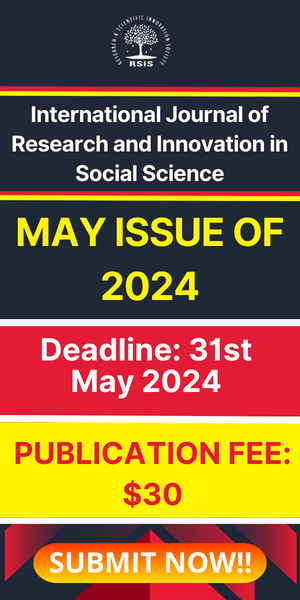- January 29, 2018
- Posted by: RSIS
- Categories: Architecture, architecture engineering, Engineering, Management
International Journal of Research and Scientific Innovation (IJRSI) | Volume IV, Issue X, October 2017 | ISSN 2321–2705
Urban Public Spaces in Webbed Cities
Ar. Bhagyalaxmi Madapur
Associate Professor, B M S College of Architecture, Bengaluru, Karnataka, India
Abstract: Great cities are defined by their public spaces, which anchor socio-economic activities and help define the unique qualities of their communitiesby supporting multiple uses.Active public spaces invite greater interactions and foster communities that are physically and socio-economically viable. Community participation is an indispensable aspect in promoting strong sense of place that has the potential to influence the physical, socio-economical and emotional health of individuals and communities safeguarding the interest of multiple stakeholders. Several transformative trends such as urban polices, urban local governance, growth of metropolitan cities, blurring city limits, changing time structures, increased mobility choices, advancing technology, etc. have been bringing a radical changes in the functioning of public spaces. Among these trends, advancing technology in in Information and Communications (ICTs)is emerging as a powerful generator of new digital public spaces, producing a strong impact on the physical shape of the city. Contemporary cities are visibly comprised of neighbourhoods and communities of ‘super connected’ citizens. Diverse characteristics of ICTs are shaping the cognition and social organization. Against this backdrop, the paper discusses various physical and virtual dimensions of public spacesand attempts to deliberate on variousconcepts and approaches at various scales that can be adopted to promote community participationthrough the usage of ICTs advancements in public spaces to turn them into engaging activity hubs stationed in real-time while respecting the needs of the users of the digital era.
Key Words: Public Space, Physical, Virtual, Community participation, Information and Communications (ICTs), PhysioDigital Public Space.
I. INTRODUCTION
‘Cities have the capability of providing something for everybody, only because, and only when, they are created by everybody’ – Jane Jacobs
Great cities are defined by their public spaces, which anchor socio-economic activities and help define the unique qualities of their communities by supporting multiple uses. The sociocultural milieu, expanding infrastructure, existing legal framework, concurrent technology, etc. create the built environment.


